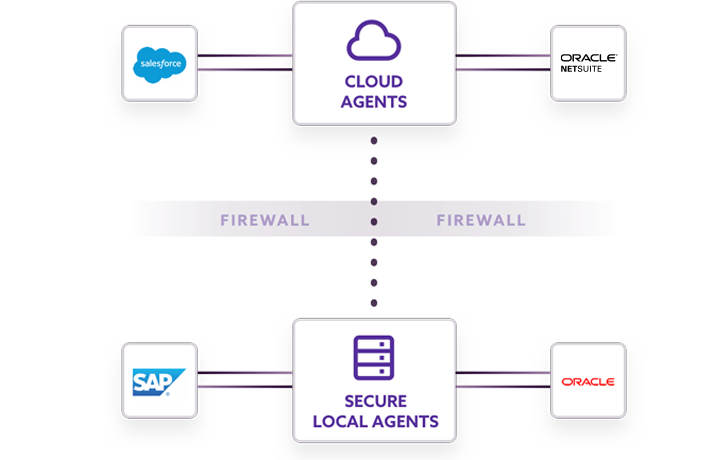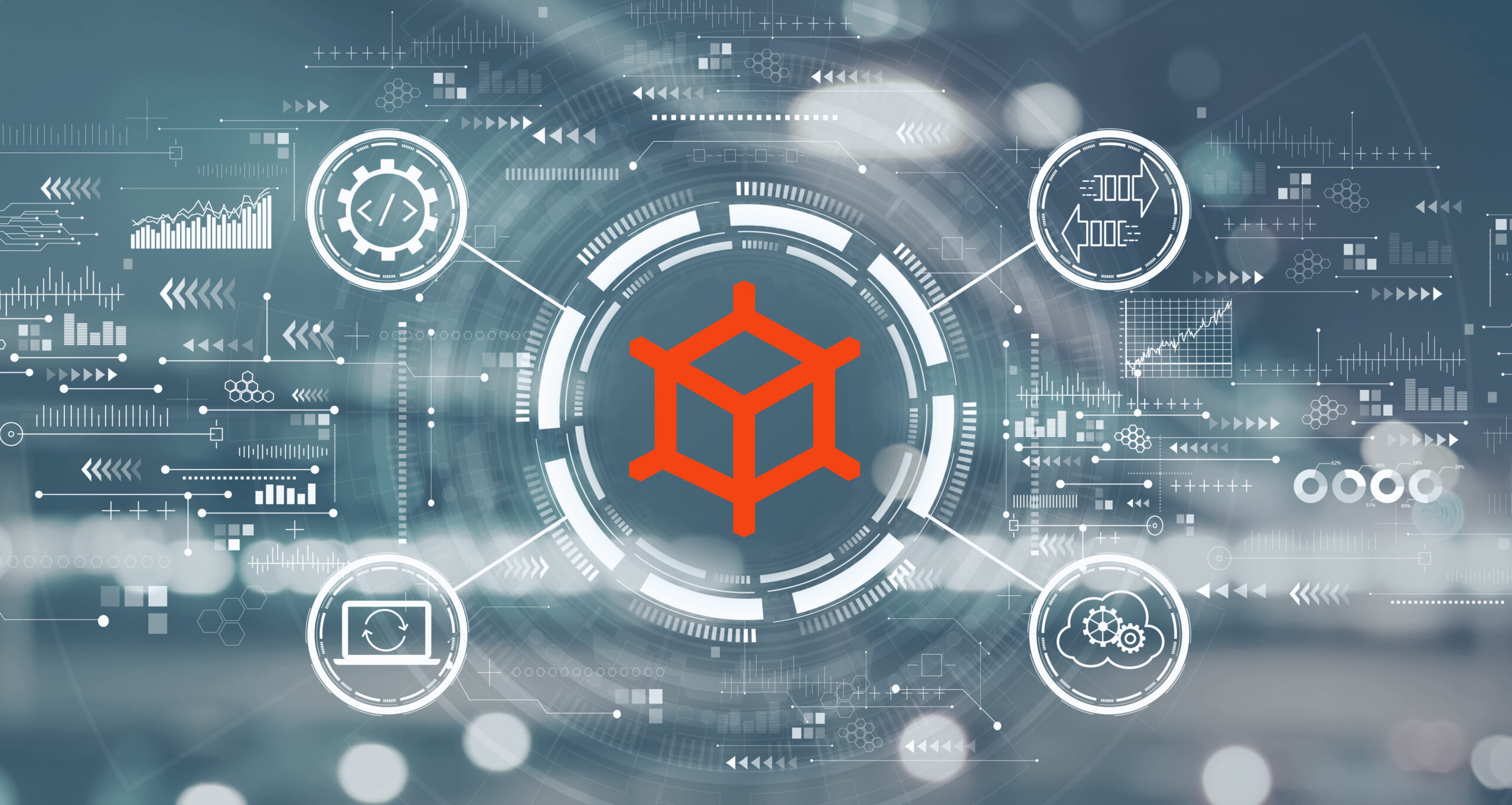Application Integration: A Detailed Primer
Modern application integrations are akin to a successful team. Just as an effective team is greater than the sum of its individual parts, the same could be said when integrating software applications — when done correctly, application integration bolsters an organization’s infrastructure, creating operational efficiencies and providing greater collective value for the business.
In short, when applications and systems that were created separately are integrated to work together, businesses can cut costs and become more efficient internally while also delivering an elevated experience to their customers.
Jitterbit’s API Manager solution gives businesses the tools to streamline this process by providing a user-friendly interface for API creation, management, and integration, ensuring that systems work together cohesively and efficiently. To learn more, schedule a free product demo, or continue reading to discover how an application integration solution can benefit your business.
What is Application Integration?
The most basic application integration definition is when multiple software applications designed for individual specific purposes are merged to work together with one another. These software applications could be cloud-based, such as Salesforce CRM, reside on-premises behind a firewall, such as SAP or be deployed in a hybrid environment i.e cloud apps hosted on an organization’s private servers.
The idea behind app integration is to create a more modern and unified infrastructure that streamlines the use of these apps as opposed to a clunky and fragmented experience that would result if they were each utilized in various silos.
What is Enterprise Application Integration (EAI)?
Enterprise application integration (EAI) describes application integration efforts on a much larger scale—instead of just connecting individual apps, EAI focuses on connecting systems across the entire organization.
In addition to modern integration tools like iPaaS, enterprise application integration may require a more complex set of solutions—like middleware or ESBs—that are better suited for large-scale, on-premises systems
Why is Application Integration Important?
Application integration is increasingly vital as businesses and other organizations seek to link their on-premises systems and cloud-based enterprise applications. Successful integration creates data flow and processes that are interconnected, ultimately giving organizations a wider set of tools with which they can work with their applications and correlating data.
That sounds nice, but practically speaking, what is an integration good for? In truth, the possibilities are nearly endless.
Major Concepts of Application Integration
Generally speaking, when discussing Enterprise Application Integration (EAI), there are a handful of concepts or components that need to be in place to link to or more applications harmoniously. These include:
APIs
Application Programming Interfaces, known more commonly as APIs, are sets of “rules” or procedures that define how varying pieces of software should interact. APIs are nearly ubiquitous at this stage because they tap into the specified data structure to give developers the ability to quickly access the functionality of other applications.
Event-driven actions
When an event takes place within a series of connected applications — a piece of data being uploaded, for example — it triggers either an individual action or a set of actions, such as invoicing and billing a customer, or managing an opportunity-to-order workflow from NetSuite ERP to Microsoft Dynamics 365 for Sales.
Data mapping
The process of mapping data is key because it defines how that data or information will be exchanged, making it easier to export, group or analyze later on. A basic example of this is when a customer enters their information in a contact form within one application, and then that same data is mapped to corresponding fields in other applications.
Application Integration Versus Data Integration
The phrases ‘data integration’ and ‘application integration’ are often used interchangeably, but there are some key differences to become familiar with. On the most basic level, data integration is when you gather information from various sources in order to create a unified structure viewable across an organization. Application integration differs in that it links applications together at a more functional level so they work together.
Data integration can be conducted in real-time, but it doesn’t need to be. Its main purpose is to help administrators move and analyze data within applications over time to get rid of any redundancies and make for a higher-quality and consistent data set. Meanwhile, application integrations often do link associated data in real-time, which helps organizations create applications and services that are more dynamic.
If we return to the analogy of thinking about your collection of applications as a team, this is where your team is coached to ensure the players are all on the same page. When set up cohesively, enterprise application integration triggers efficient workflows when specific events occur within any of the applications that are integrated. Because this happens essentially in real-time, organizations enhance their agility and ability to make critical business decisions quickly and before it may be too late.
Who’s Using Application Integration?
Many types of organizations across a wide swath of industries use application software integration to modernize their aging processes and systems. Organizations in varied industries including consumer goods, retail, healthcare, manufacturing and banking have capitalized on integrations to meet their very specific business needs and objectives.
Real-World Example: App Integration in the CPG Industry
In one example, Kellogg’s brand RXBAR hit a period of rapid growth and needed to automate its shipping process to make it more efficient and keep up with customer demand. The brand previously used a series of manual processes to bid on shipping contracts with logistics partners, but the system was time-consuming and led to frequent delays. The main problem was the sales and customer service teams didn’t always have quick access to key data when they needed it most.
To meet this challenge, RXBAR integrated multiple applications and used NetSuite as a central hub, which allowed it to automate the bidding process and connect previously siloed data for organization-wide 360-degree visibility. The result was more productive teams, happier customers and, ultimately, increased ROI.
Benefits of Application Integration
Traditional and web application integration results in a number of tangible operational benefits for organizations, including:
The ability to access data from anywhere in the world
Data was already well on its way to being spread across multiple environments, and that trend has accelerated with teams increasingly distributed in the wake of the global pandemic. The beauty of integrating applications across these environments is allows teams to access data from anywhere and sort it in any format.
Near-instant productivity
Complicated applications such as ERP, CRM or CPQ tools all have characteristics that are unique, whether it’s the way Salesforce authenticates protocols or how NetSuite optimizes performance. Today, modern application integration allows organizations to quickly and easily integrate applications in a way that is functional and productive almost immediately, allowing teams to focus on more valuable work right out of the gate.
Real-time visibility into all aspects of the business
Full visibility helps teams save time and empowers individual employees to focus on more rewarding work. Since data is synchronized across the organization it helps ensure accuracy, while also automating mundane processes to streamline business operations.
Using Jitterbit for Your Application Integration
Thousands of organizations trust Jitterbit to optimize their business processes through integrated application expertise. Here are just 3 reasons why Jitterbit is the perfect partner for your application integration needs:
1. Tailored Solutions
Jitterbit customizes integrations based on your requirements and budget. Need just a few integrations to sync core systems? No problem. Managing a large enterprise with eight or more applications? Jitterbit scales with you.
2. Built-in Compliance
The Jitterbit Harmony API Integration platform is both robust and compliant with industry-leading security standards, including MFA, SSO, E2E Encryption, SOC2, ISO 27001, GDPR, CCPA, and HIPAA.
3. Comprehensive Security Measures
Jitterbit offers three layers of security – physical, organizational and logical, which includes:
- Secure authentication and logging capabilities
- Real-time security monitoring
- A transparent privacy policy
To learn more and get started on your integrated application journey with Jitterbit, talk to an application integration expert today.



